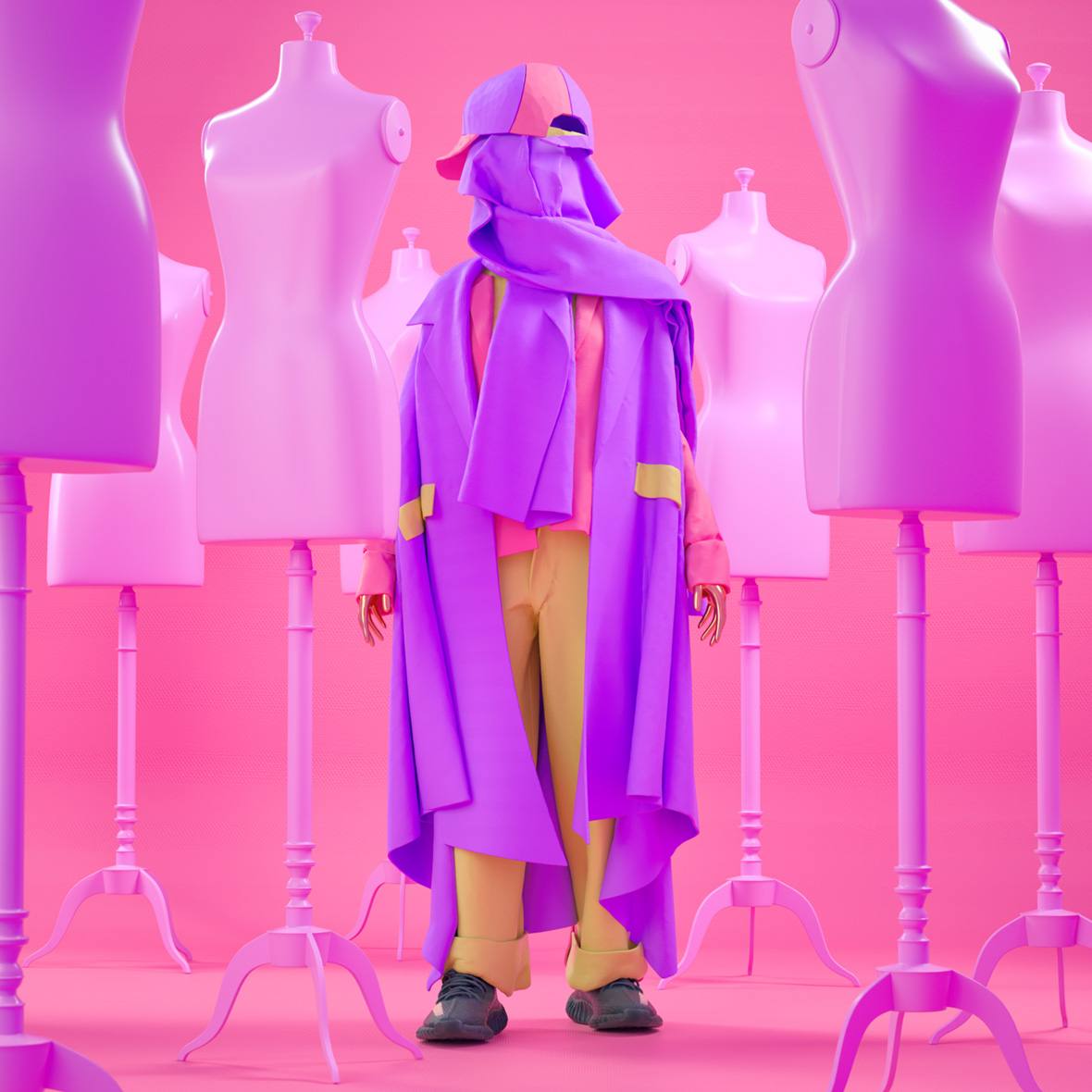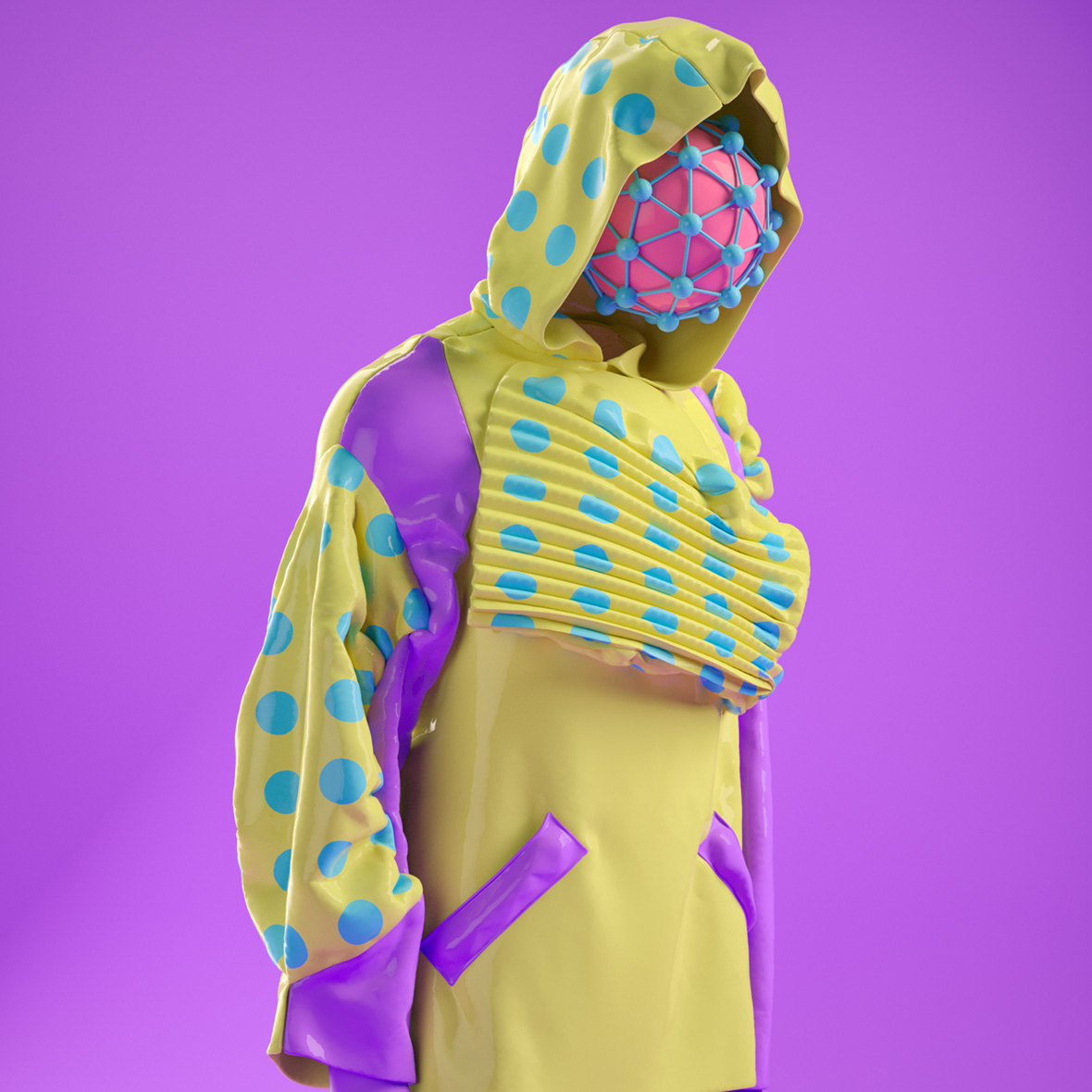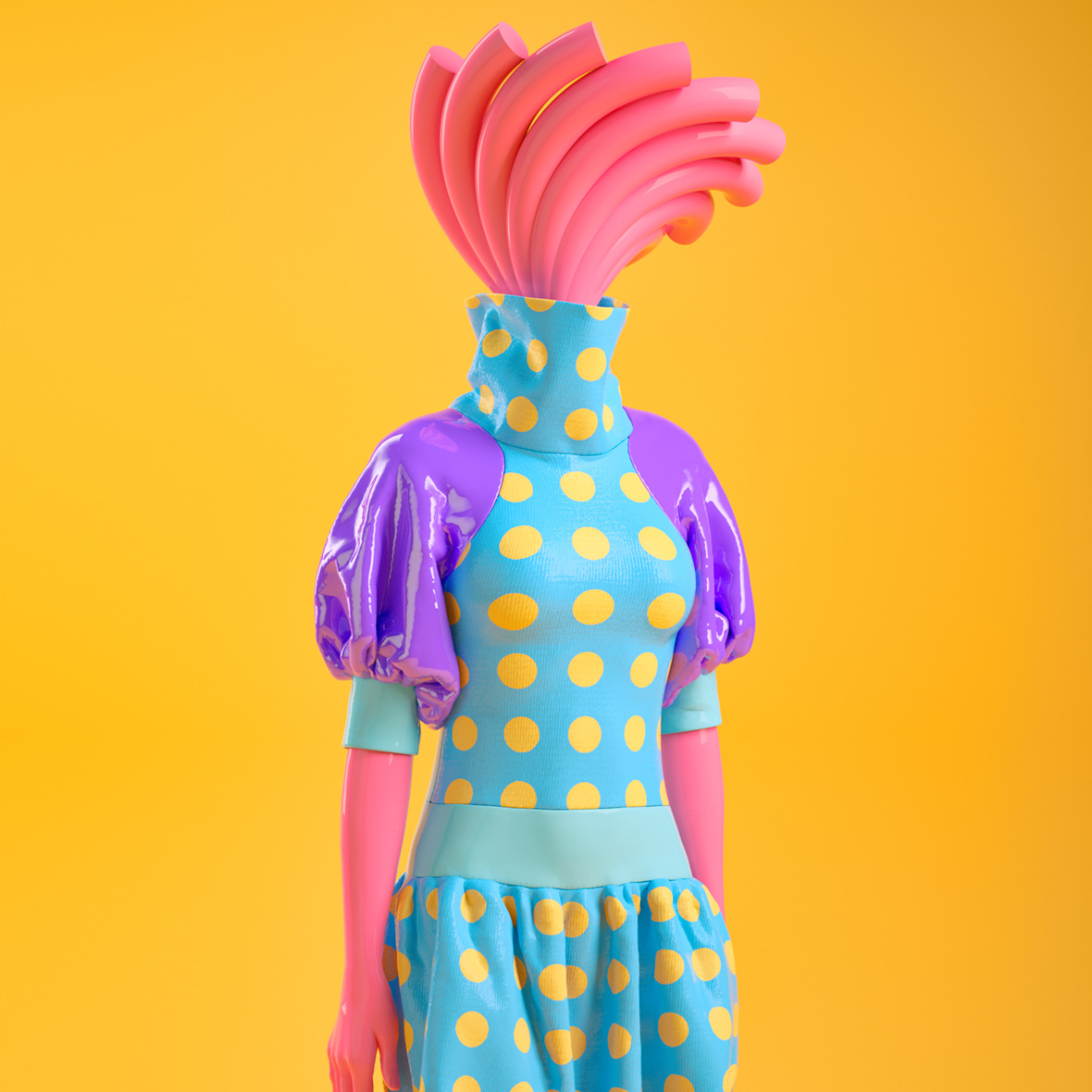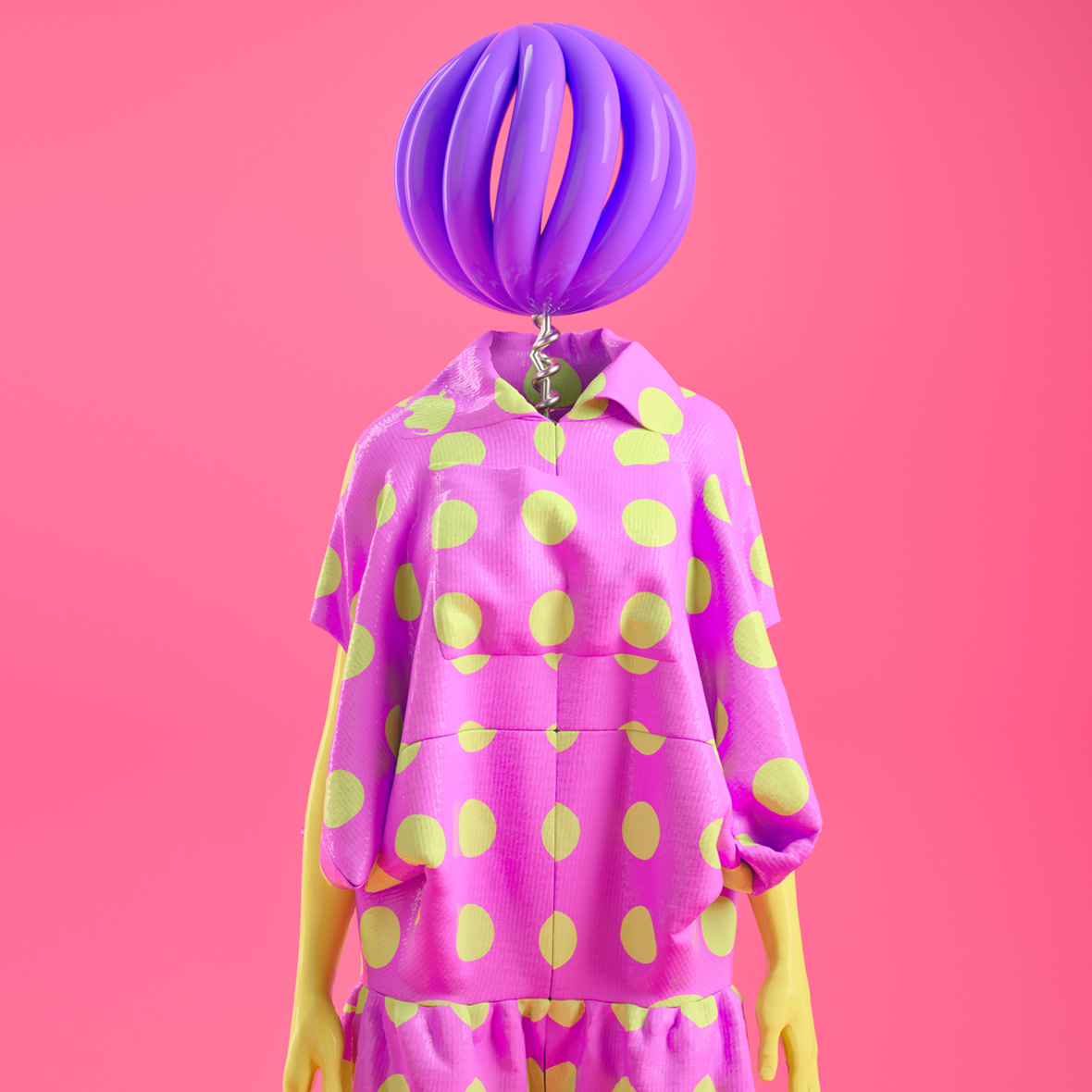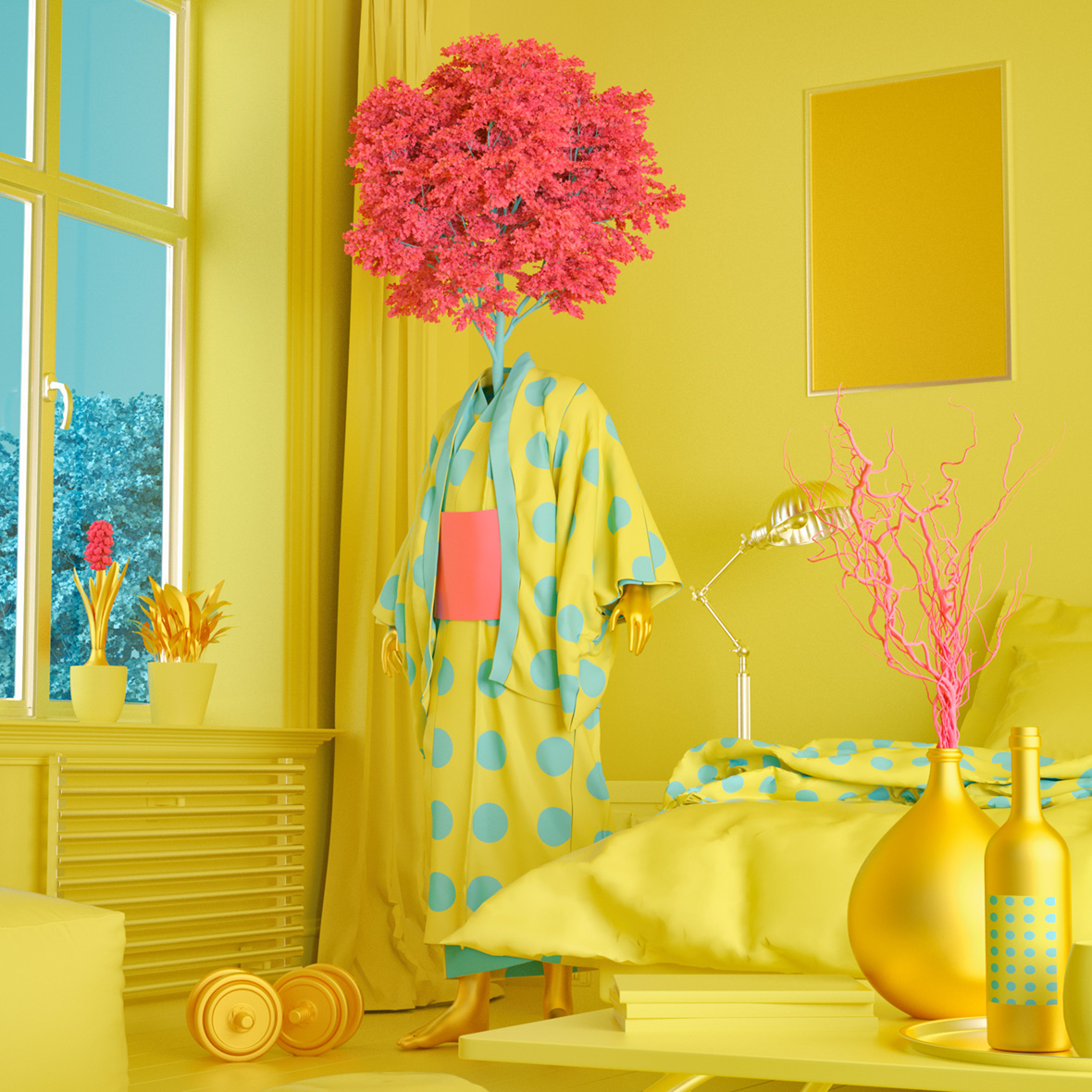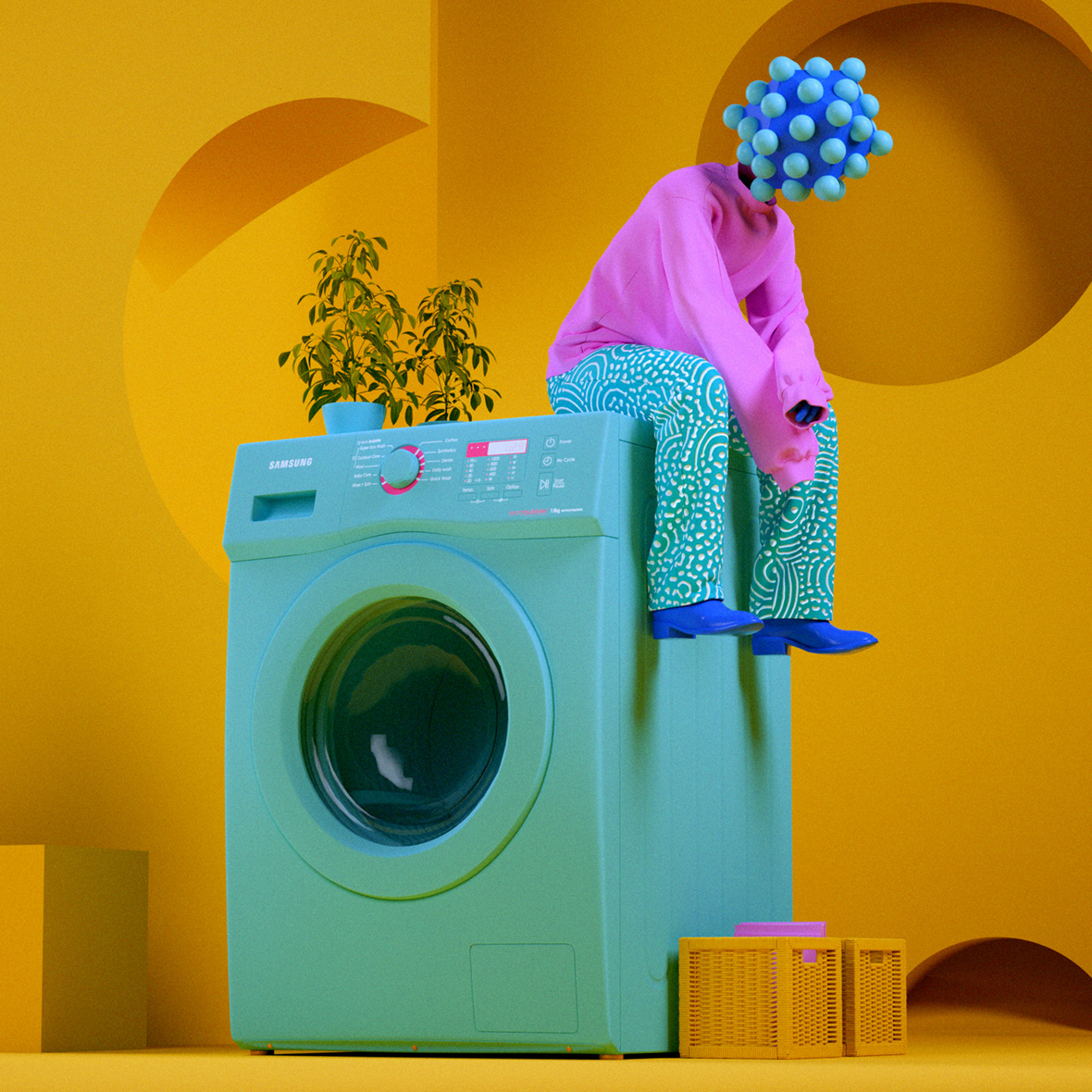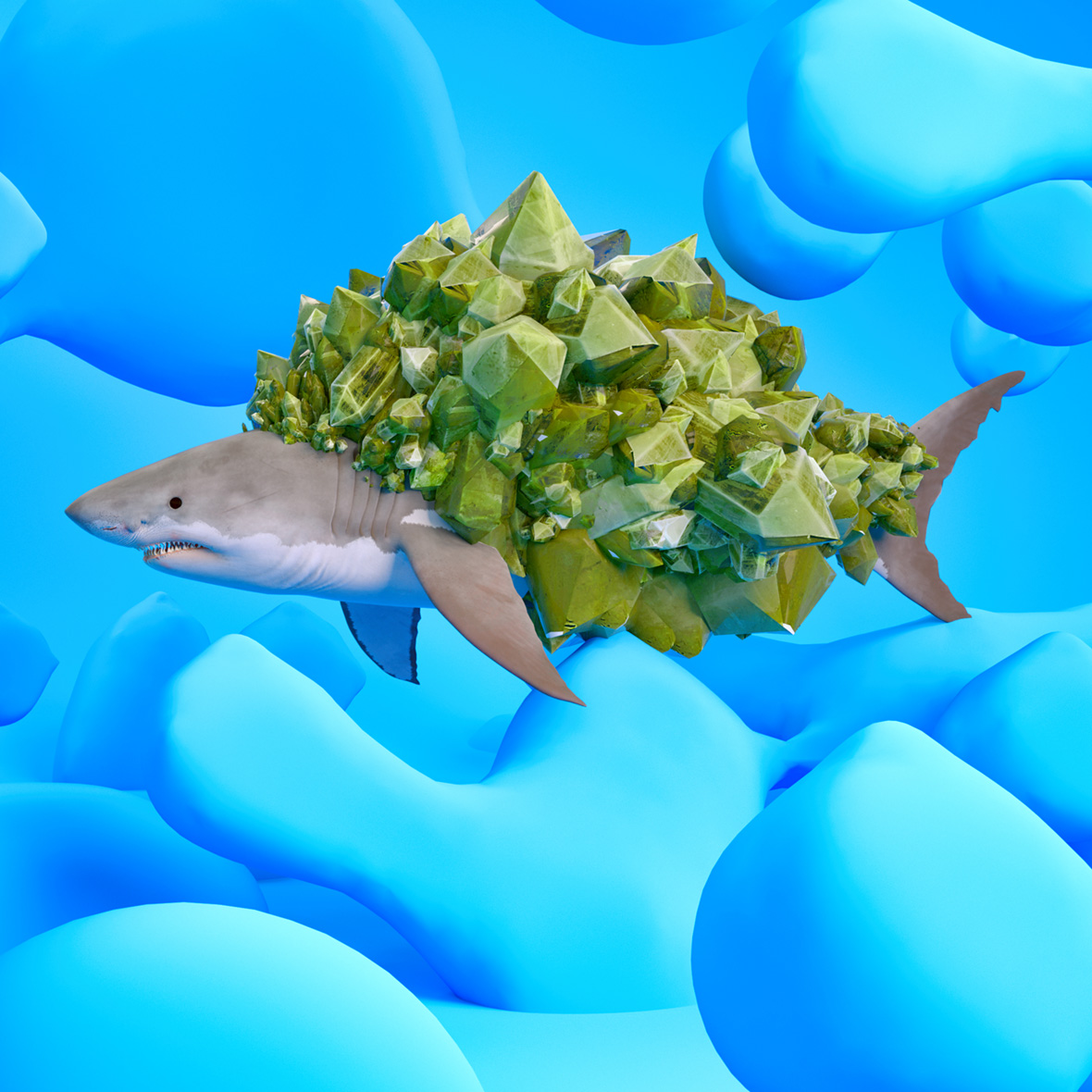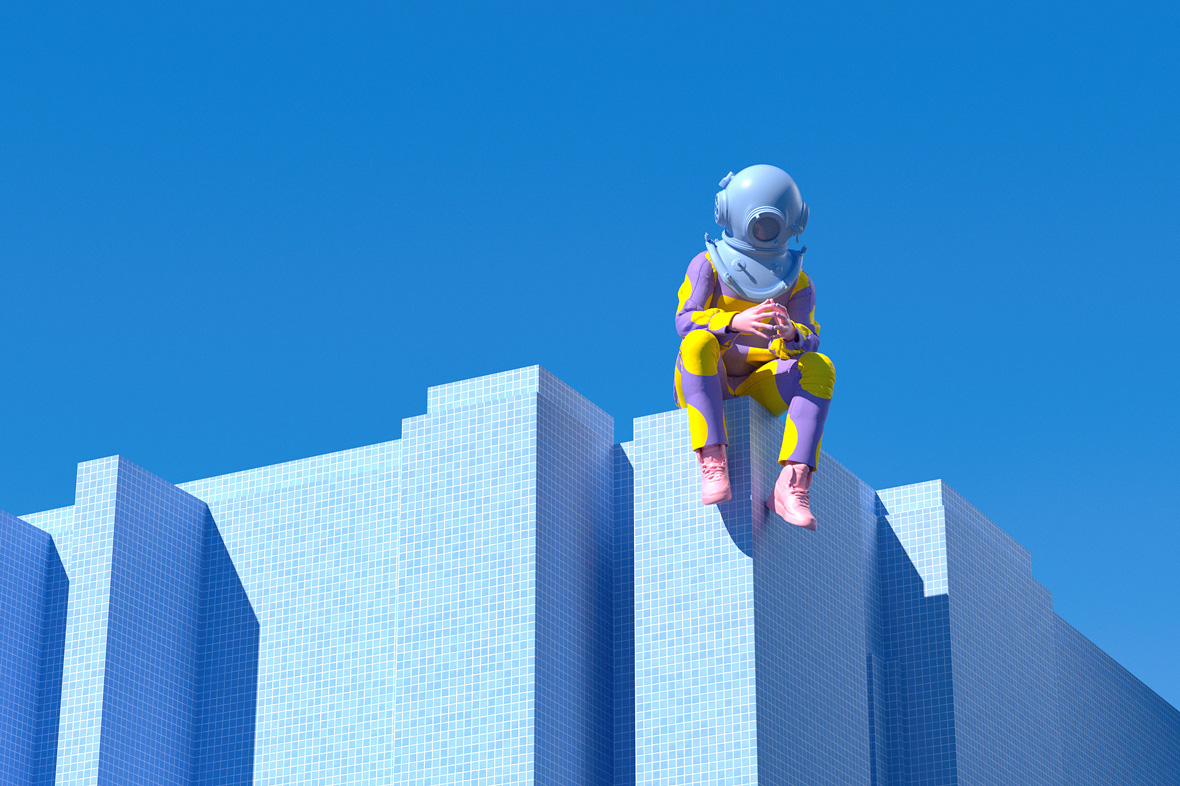
Rendered in bold, gumball colors, the digital universe of 3D illustrator Kota Yamaji is a place that’s difficult to forget. It’s a surreal realm populated by an eclectic cast of characters, all of whom don’t seem to have human demeanors, or at least not visible ones—their heads are either replaced by gargantuan fruits, hidden behind scuba masks, or covered by draped towels. Despite this, his characters have no shortage of personality.
3D 插画家 Kota Yamaji 的数字世界令人眼前一亮,那里由糖果色彩填充,住着各式各样的角色。角色们要么头顶巨型水果切面,要么隐藏在潜水面罩或是抽象图形的背后。整幅画面明亮通透,带给人舒适无比的视觉感受。
Within Yamaji’s work, vibrant colors drench every inch of the frame and every character is dressed to impress. Some don polka-dotted attire that evokes whiffs of Yayoi Kusama, while others are dressed in flamboyant pieces covered in patterns resembling feathers, mazes, and interlocking grids. Garments range from caped shawls and sweatshirt hoodies to reimagined kimonos and puff-sleeved dresses.
Yamaji cites brands such as ADER Error, Undercover, and Kenzo as some of his favorites, and this love of streetwear shows in the eye-catching layers and baggy silhouettes that he so frequently employs. “I find it interesting in how clothes start as 2D sketches and seeing these ideas turned to something 3D and wearable,” he grins. “I enjoy using my own tools to make clothes like the designers I look up to.”
Kota 作品的每一寸画板都充斥着令人愉悦的色彩,角色也个个是盛装打扮。有的穿着充满草间弥生 (Yayoi Kusama) 风格的波点印花服装;有的则身着饰有羽毛、迷宫和互锁网格等图案的华丽衣服,服饰种类繁多,有斗篷披肩、连帽衫,也有改良过的和服和泡泡袖连衣裙。
Kota 对 ADER Error、Undercover 和 Kenzo 等一众街头品牌十分喜爱,并将这份喜爱体现在他的作品当中,例如叠穿和宽松廓形的运用。“从一张 2D 设计草图,最终变成 3D 可穿戴的服装,本身就是一个很有趣的过程。作品中的这些衣服,某种程度上算是一种致敬吧。” 他笑着说道。
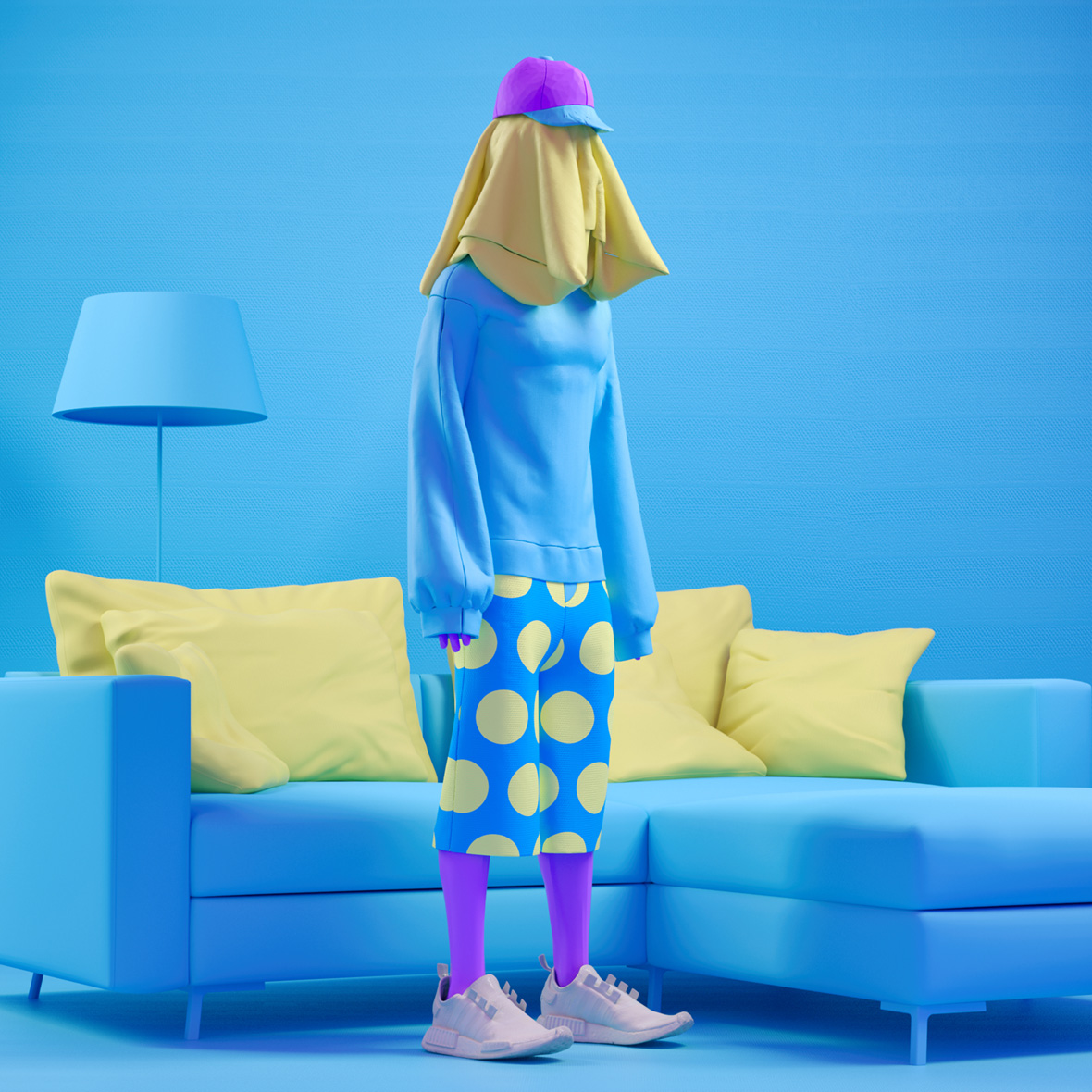
The settings that his characters inhabit come as afterthoughts for Yamaji. In fact, backdrops are often just a single block of color. Even when props appear, whether it be couches and chairs or washing machines, they come in similar shades as the characters’ clothing or their immediate surrounding. This isn’t due to a lack of effort of creativity though—the minimalism is by design. “I want people to focus on my characters, so I don’t usually add buildings or complicated backgrounds,” he explains.
至于角色所处的背景,Kota 习惯在人物完成之后再去构思。事实上,他的作品背景通常都只是单一的纯色。即使放置道具,无论是沙发、椅子还是洗衣机,它们的色调也往往与角色的衣服或周围环境趋同。这当然不是为了敷衍,而是他刻意而为的极简主义风格。他解释道:“我希望人们关注我所创作的角色,因此我不太喜欢添加建筑物或复杂的背景在角色身后。”
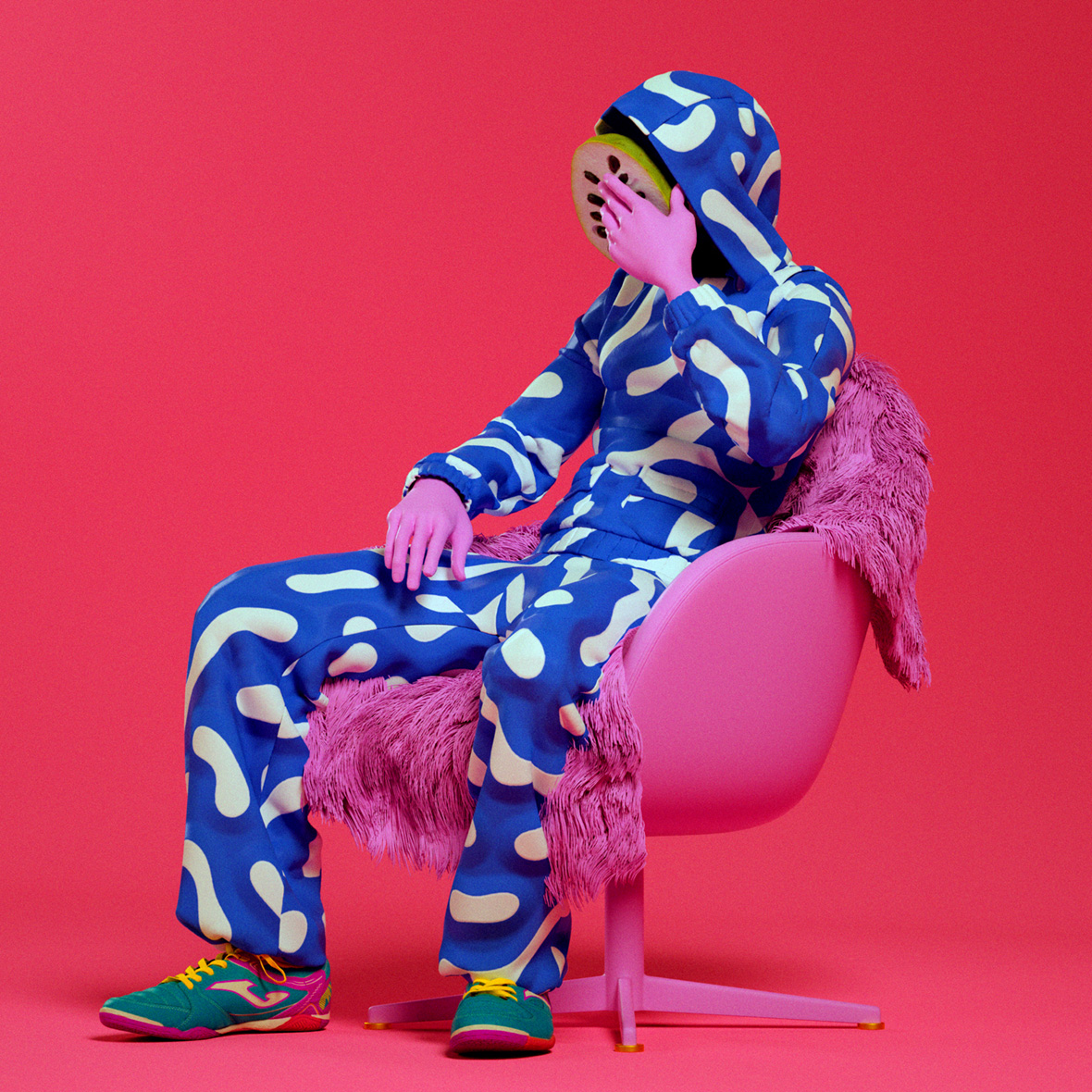
In a separate series, Yamaji’s humanoid characters are gone entirely, replaced by realistic animals standing or floating in front of monochromatic backgrounds. With this project, he gleefully plays with contrasts; the organic forms of these animals are juxtaposed against rigid structures of minerals and crystals, which sprout and jut freely from their bodies.
Yamajii doesn’t claim to be working around any implicit messaging around conservation or environmentalism—he admits that this project was simply an exercise in aesthetics. Even though there’s obvious virtue in creating works that prod into deeper concepts, he finds no shame in creating art that simply satisfies his own creative curiosity.
在另一个独立系列中,角色被取代成了动物。坚硬的矿石和晶体在动物身上野蛮生长、伸展,与动物本体形成有趣的对比。
Kota 表示该系列不过是他的一次美学尝试,并非旨在传达环境保护或环保主义。虽然深层意义能赋予作品更多价值,但他认为,纯粹为满足自己的创意欲望而进行创作,也无可厚非。
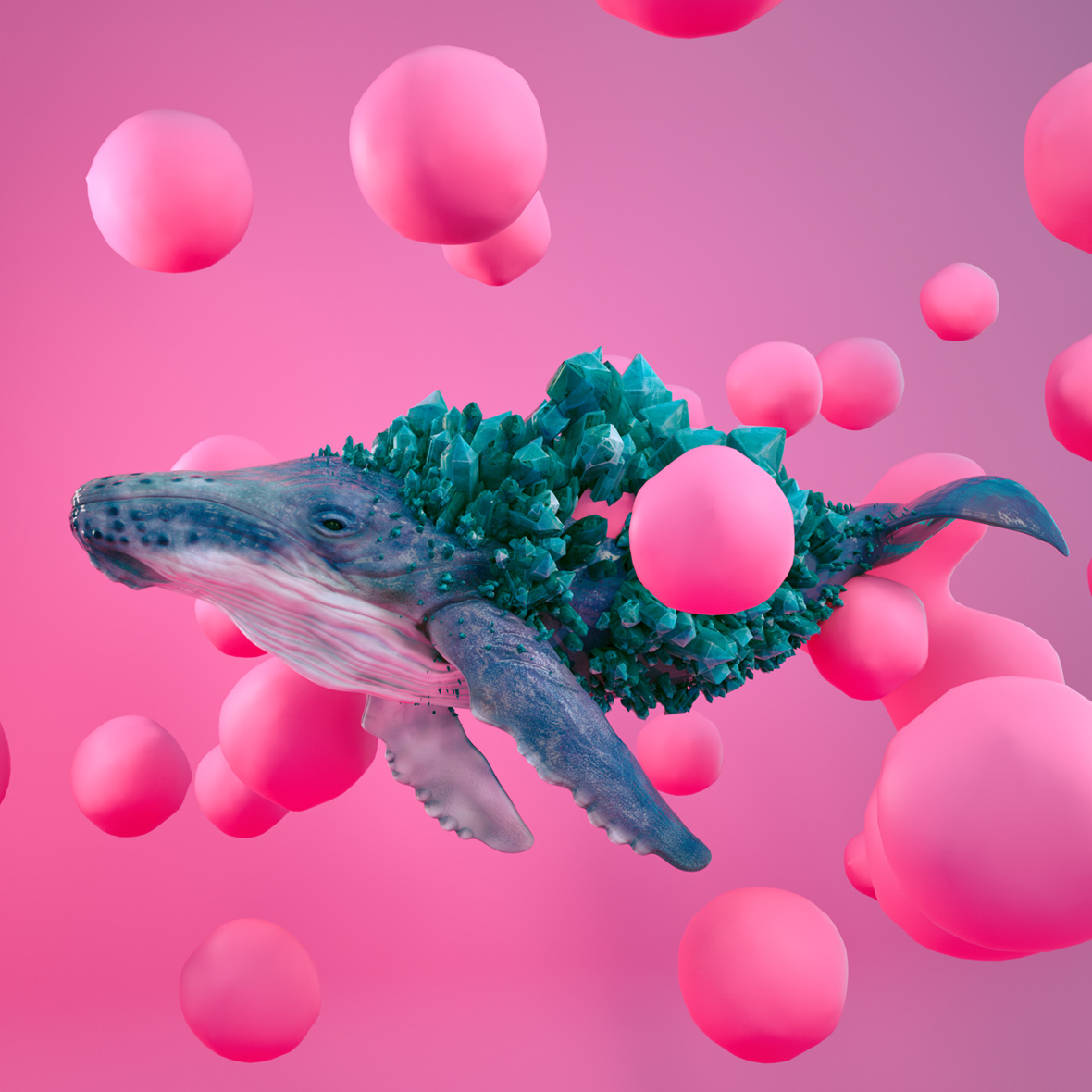
This insistence on being himself, without pretense, seems to be a quality that transfers to the characters who populate his universe. Through the way they dress, it’s clear that they—like their creator—aren’t afraid of staying against the grain. “There are many illustrators who are better than me, but I’m not interested in competing with them,” Yamaji says. “I just want to create art that doesn’t feel typical.”
这种坚持自我、不屑于伪装的态度同样体现在他的角色身上,他们的着装风格与这位艺术家一样,无惧于开辟自己独有的道路。“有很多插画师都比我优秀,但我没有兴趣和他们比。我只是想创造不一样的,属于我个人的作品。”Kota 说道。
Like our stories? Follow us on Facebook and Instagram.
Website: www.kotayamaji.com
Instagram: @kotayamaji
Behance: ~/kotayamaji
Contributor: David Yen
Chinese Translation: Olivia Li

